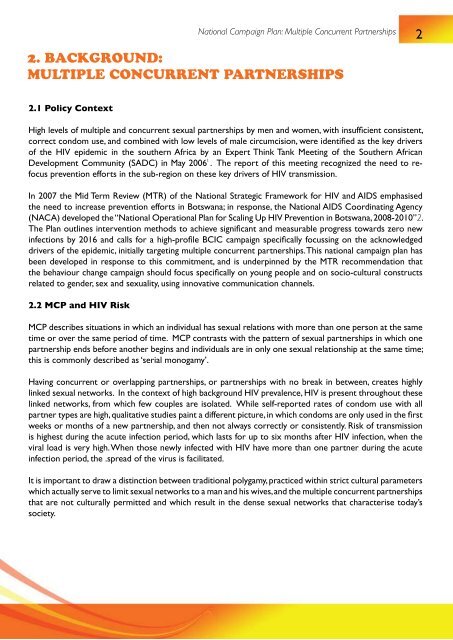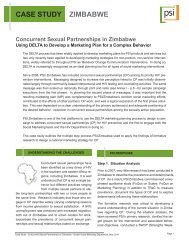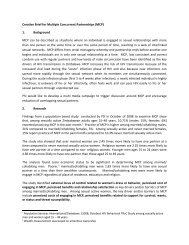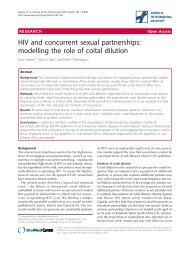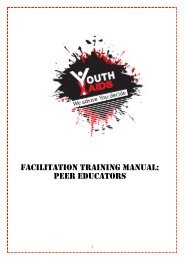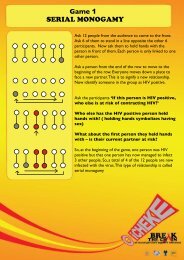O Icheke National Campaign Plan - CONCURRENT SEXUAL ...
O Icheke National Campaign Plan - CONCURRENT SEXUAL ...
O Icheke National Campaign Plan - CONCURRENT SEXUAL ...
- No tags were found...
Create successful ePaper yourself
Turn your PDF publications into a flip-book with our unique Google optimized e-Paper software.
<strong>National</strong> <strong>Campaign</strong> <strong>Plan</strong>: Multiple Concurrent Partnerships2. BACKGROUND:MULTIPLE <strong>CONCURRENT</strong> PARTNERSHIPS22.1 Policy ContextHigh levels of multiple and concurrent sexual partnerships by men and women, with insufficient consistent,correct condom use, and combined with low levels of male circumcision, were identified as the key driversof the HIV epidemic in the southern Africa by an Expert Think Tank Meeting of the Southern African1Development Community (SADC) in May 2006 . The report of this meeting recognized the need to refocusprevention efforts in the sub-region on these key drivers of HIV transmission.In 2007 the Mid Term Review (MTR) of the <strong>National</strong> Strategic Framework for HIV and AIDS emphasisedthe need to increase prevention efforts in Botswana; in response, the <strong>National</strong> AIDS Coordinating Agency(NACA) developed the “<strong>National</strong> Operational <strong>Plan</strong> for Scaling Up HIV Prevention in Botswana, 2008-2010”2.The <strong>Plan</strong> outlines intervention methods to achieve significant and measurable progress towards zero newinfections by 2016 and calls for a high-profile BCIC campaign specifically focussing on the acknowledgeddrivers of the epidemic, initially targeting multiple concurrent partnerships. This national campaign plan hasbeen developed in response to this commitment, and is underpinned by the MTR recommendation thatthe behaviour change campaign should focus specifically on young people and on socio-cultural constructsrelated to gender, sex and sexuality, using innovative communication channels.2.2 MCP and HIV RiskMCP describes situations in which an individual has sexual relations with more than one person at the sametime or over the same period of time. MCP contrasts with the pattern of sexual partnerships in which onepartnership ends before another begins and individuals are in only one sexual relationship at the same time;this is commonly described as ‘serial monogamy’.Having concurrent or overlapping partnerships, or partnerships with no break in between, creates highlylinked sexual networks. In the context of high background HIV prevalence, HIV is present throughout theselinked networks, from which few couples are isolated. While self-reported rates of condom use with allpartner types are high, qualitative studies paint a different picture, in which condoms are only used in the firstweeks or months of a new partnership, and then not always correctly or consistently. Risk of transmissionis highest during the acute infection period, which lasts for up to six months after HIV infection, when theviral load is very high. When those newly infected with HIV have more than one partner during the acuteinfection period, the .spread of the virus is facilitated.It is important to draw a distinction between traditional polygamy, practiced within strict cultural parameterswhich actually serve to limit sexual networks to a man and his wives, and the multiple concurrent partnershipsthat are not culturally permitted and which result in the dense sexual networks that characterise today’ssociety.


